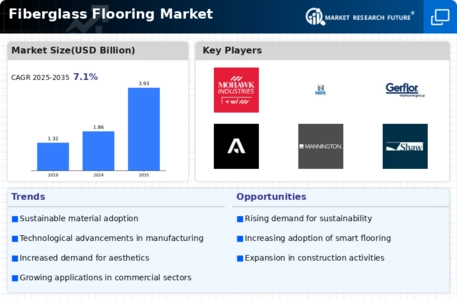Fiberglass Flooring Market Summary
The Global Fiberglass Flooring Market is projected to grow significantly from 1.86 USD Billion in 2024 to 3.93 USD Billion by 2035.
Key Market Trends & Highlights
Fiberglass Flooring Key Trends and Highlights
- The market is expected to experience a compound annual growth rate (CAGR) of 7.04% from 2025 to 2035.
- By 2035, the market valuation is anticipated to reach 3.93 USD Billion, indicating robust growth potential.
- In 2024, the market is valued at 1.86 USD Billion, reflecting a strong foundation for future expansion.
- Growing adoption of fiberglass flooring due to its durability and low maintenance requirements is a major market driver.
Market Size & Forecast
| 2024 Market Size | 1.86 (USD Billion) |
| 2035 Market Size | 3.93 (USD Billion) |
| CAGR (2025-2035) | 7.04% |
Major Players
Mohawk Industries, NOX Corporation, Gerflor Group, Armstrong Flooring, Inc., Mannington Mills, Inc., Shaw Industries Group, Inc., Tarkett, TOLI Fluor Corporation, Interface, Milliken & Company, Polyflor Ltd




















Leave a Comment